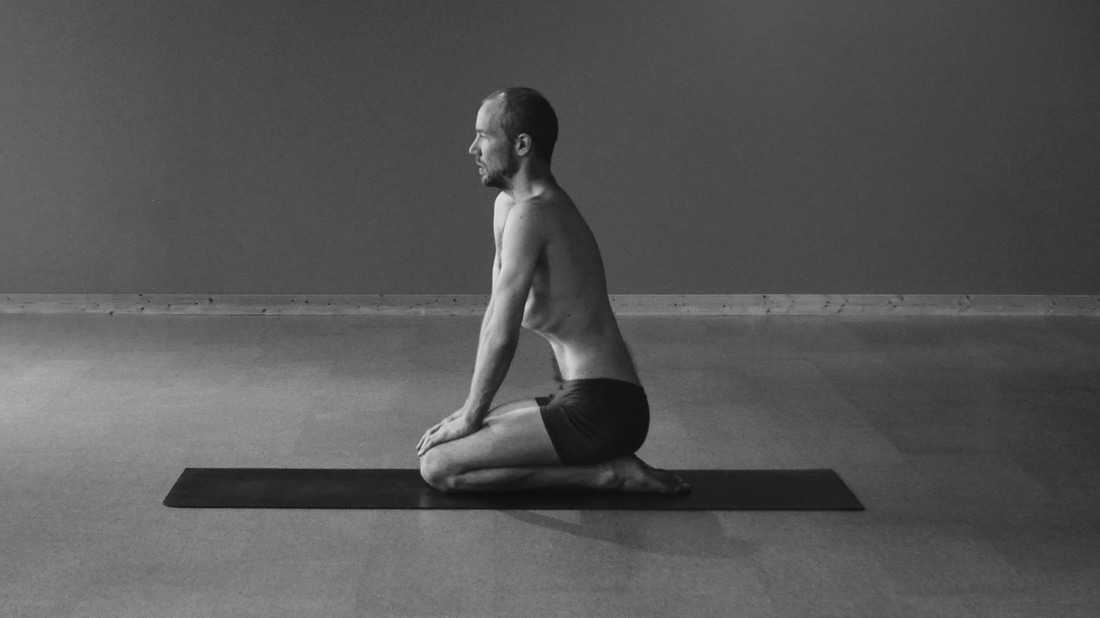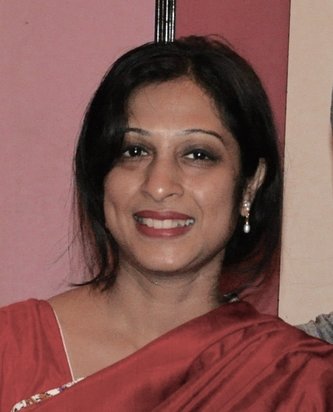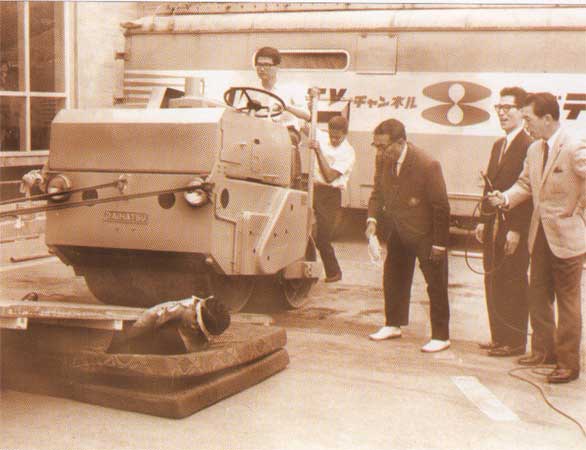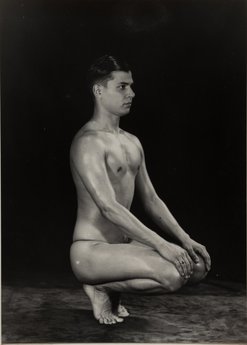|
As students of yoga, we think a lot about its history, practices and goals. We take what we learn from our teachers seriously, since they have experience and perspective that we do not. As we - all of us - grow and become more responsible for the future, it is important to assess our values.
What new knowledge and research has come to light? What of the old traditions are valid? Are there any that have been destabilized or proven false? What are the current trends, physically and ideologically, and where do they fit in to the big picture? TRADITION A lot of people will say if it has not been passed down, it is not truly part of the lineage. From a historical point of view this is true. There are many texts and teachers that are full of specific instruction, and we can follow them to the letter if we choose. But we can think of traditions like laws: there is the letter of the law and the spirit of the law. Likewise, there is the letter of the tradition and the spirit of the tradition. Every teacher is a product of his/her time and place and so has unique advantages and limitations. If we think about the spirit of traditions, we start to look at the purpose of the practices and then assume that the teachers have used the best means available to them - the best tools and knowledge - to accomplish that purpose. We start to look at the traditions of yoga from a more theoretical viewpoint instead of as a group of set practices. So we, as teachers, should use the best tools and knowledge available to us to accomplish the purpose of the practice. THE PROGRESS OF GHOSH YOGA The yoga lineage of Bishnu Ghosh is exciting because as much as it has stayed the same for the past 100 years, it has updated itself using cutting edge medical knowledge. Gouri Shankar Mukerji (in the 1950s) was a medical doctor on the forefront of testing yoga postures using state of the art tools. The information he gained in the process refined the technique and understanding of the postures and practices, and the effects can be clearly seen in any Bikram class where they talk about circulation in the knees or compressing the pancreas. As medical technology advances, it is our responsibility to use it the best we can. To this end, we must recognize the work of Pure Action, who fund and publish research about yoga and its medical effects. Even though they are uncovering and presenting new information, it is absolutely in line with the tradition of this lineage. That is just one example of how tradition progresses. We must always seek to learn more, understand more, and pass more on to our students.
0 Comments
Most of us have weak abdominal muscles. Our culture of sitting in chairs and long hours of non-physical work means that we lack important strength in the midsection, especially the important transverse abdominis (TVA) muscle that wraps our abdomen from side to side.
This muscle is vital for our breathing, as it is the primary driver for exhaling. It also supports the spine by creating a pressure system in the abdominal cavity. This is usually the muscle referred to when teachers say "belly in" or "stomach in." The TVA helps digestion, too, by massaging the intestines with each breath. It is part of the brilliant design of our digestive system, that it is gently stimulated by the diaphragm on the inhale and the TVA on the exhale. Since our abdominal muscles are weak from so much sitting, it is common for us to have digestive problems, especially indigestion and constipation, from lack of movement and massage of the intestines. These problems are improved greatly by strengthening the TVA, and there is no better exercise for that than "Blowing/Kapalbhati." Make sure you focus on strong exhales coming from the low belly. Your muscles may get tired and sore - that is okay! (This is not to be confused with the most prominent abdominal muscle, the rectus abdominis or 6-pack, which has a different function. The 6-pack is the muscle that we exercise when doing sit-ups or crunches, but it will not help breathing or digestion nearly as much as the TVA.) The well-known teachers in this lineage cover almost 100 years and a variety of expertise and interest.
Paramhansa Yogananda was the older brother of Bishnu Charan Ghosh. Yogananda traveled abroad extensively in America and Europe, becoming quite famous. His approach was far more mental and spiritual than Bishnu, who focused intently on physical elements including feats of strength and health. Early on, the two brothers tried to combine their expertise to make a comprehensive method of instruction, but it did not last. Still, some elements of Yogananda's teaching remain in Bishnu's methods, and some of Bishnu's remain in Yogananda's. Buddha Bose was the first star student of Bishnu Ghosh in the 1930s. They traveled around India and the world giving lecture/demonstrations of yoga, often accompanied by Paramhansa Yogananda. Bose published a beginning book of 24 postures in 1939 and wrote a vast manuscript of 84 postures that wasn't published until 2015. After Ghosh's death in 1970, Bose opened the Yoga Cure Institute in South Kolkata, teaching therapeutic yoga. It is still operating today, run by Bose's daughter Rooma. http://www.yogacureinstitute.com Gouri Shankar Mukerji (GSM) was Ghosh's star pupil, close friend and personal doctor in the 1940s, 50s and 60s. By this period, their purpose as yogis was focused on bringing health to ordinary people all over Bengal. GSM went to Germany for a couple years to become a medical doctor, and wrote a book describing 84 postures along with extensive medical explanations and some of the first scientific research into the physiological effects of yoga. Reba Rakshit was a well-known contortionist and physical culturist who traveled and demonstrated with Bishnu. She wrote a regular column about yoga for women in the Bayam Charcha magazine, pioneering yoga practice for house holding females. Little is known about Reba, though new research is forthcoming. Kushala Das Kushala is the oldest in the Das family (see the next two entries). For decades she has run a yoga school for young girls just down the road from the Ghosh school. She was one of Rajashree's (see below) main teachers. Prem Sundar Das An accomplished practitioner of the advanced asanas, Dr. PS Das still works at Ghosh's Yoga College once or twice per week, writing prescriptions for the students there. Many yogis in the West know him from his presentations at some of Bikram Choudhury's (see below) teacher trainings. His pictures are all over the school, and he is the author of the book Yoga Panacea. Dibya Sundar Das The younger of the Das brothers, Dibya was also very proficient at advanced asana. Alongside his brother's, his pictures grace the walls of Ghosh's Yoga College. He founded the World Yoga Society in Kolkata, prescribing yoga to patients and students. http://www.woyoso.org Bishwanath Ghosh was the youngest son of Bishnu. In his youth he focused on feats of strength, "taking his first elephant" on his chest at age 16. He broke thick chains and lifted dining tables with his teeth. In later days, he emphasized simple therapeutic exercises that helped ordinary people get and stay healthy. Karuna & Jibananda Ghosh moved to Japan soon after their marriage in 1970. Karuna was the youngest daughter of Bishnu Charan, often demonstrating and modeling exercises, including for her father's publication Yoga Cure. She married Jibananda Ghosh (whose name was already Ghosh) who was also a dedicated student of Bishnu. They established the Ghosh Yoga Institute Japan to bring the yoga of India to the population of Tokyo, where Jibananda still lives and teaches. Bikram Choudhury was a student of Ghosh and GSM in the 60s, a bodybuilder and then a yogi. He left India to teach yoga in Japan and then the US. He teaches a specific set of 26 postures done in a heated room, and his passionate advocacy of therapeutic yoga has inspired many teachers and studios to adopt his style. https://www.bikramyoga.com Rajashree Chakrabarti Choudury was a student of Prem Sundar Das and Kushala Das (see above), studying at Ghosh's Yoga College from a young age. She learned therapeutic yoga and won several yoga competitions as a young girl before coming to the US to marry Bikram Choudhury. She is the founder of USA Yoga, a proponent of both yoga competition and yoga therapy. http://www.rajashree.com Tony Sanchez was an accomplished pupil of Bikram Choudhury when Bikram first came to the US in the 70s. He won two international asana championships and ran a studio in San Francisco before retreating from the mainstream teaching world to practice in solitude. He still teaches occasionally to all levels of students and teachers. http://84yogis.com Muktamala Mitra (pictured above) is the granddaughter of Bishnu Ghosh. She currently runs Ghosh's Yoga College in Kolkata, teaching therapeutic, prescriptive yoga to students and aspiring teachers. She is a direct descendant of Ghosh, teaching in the tradition of her father and grandfather. http://www.ghoshyogatraining.com http://ghoshsyoga.com All of the characters above are students (or 2nd generation students) of Bishnu Charan Ghosh, except for Yogananda, who was his brother and contemporary. A lot of people ask "what is Ghosh Yoga?" Where does it come from? Who taught it? What are the values, principles and techniques to achieve them? This is the first of three blog entries that will describe 1) the principles and goals of Ghosh Yoga, 2) the main characters and teachers, and 3) the historic sources and modern knowledge that are the basis for the techniques. First, the principles:
Ghosh Yoga has 4 main branches, plus a 5th branch if you look back into history a few decades. 1. THERAPY In the words of Bishnu Ghosh himself, "your health will either compel you to live a life of an old man in your teens or permit you to enjoy the munificent beautiful gifts of God in this wonderful world even when you are old." As such, maintaining health is fundamental. Ghosh Yoga has exercises for nearly every physical ailment or injury, and every organ and system of the body. This continues to be the most important branch of the yoga. 2. SPIRITUAL GROWTH It is well-known that Bishnu was the younger brother of Paramhansa Yogananda. Less known is that both of their parents were accomplished Kriya yogis, skilled in meditation. This element can be harder to spot in some of the modern iterations of the lineage, but if we look back at the origins in the 1930s, Buddha Bose writes of "the Kundalini Shakti, a latent power within every human being. When awakened Kundalini Shakti confers on man many special powers." Any brief description of spiritual goals and techniques falls short, which is often why spiritual aims are superseded by more immediate, physical ones. Spiritual techniques and practices are reserved for committed, dedicated students. 3. PERFORMANCE Exhibition and competition are popular in India, and many of Ghosh's students competed in weightlifting, ju-jitsu and even "Best Physique" and "Mr. Universe" competitions. As yoga has come to the West, Bikram and Rajashree Choudhury have played large roles in creating the Bishnu Ghosh Cup, the International Yoga Sports Federation and USA Yoga, all organizations for yoga asana competition. 4. BODYBUILDING Before they were yogis, Ghosh, Bose, Mukerji and Choudhury were all bodybuilders. Weight lifting was often seen as a complementary practice to yoga asana. 5. FEATS OF STRENGTH This branch has fallen out of popularity over the last couple decades, but it was prominent during Ghosh's youth. He taught several magnificent feats of strength to students in the 60s, including his son Bishwanath (pictured above), Jibananda Ghosh (who married his daughter), Bikram Choudhury and Rooma Bose. These feats included having something heavy, like a street roller or elephant, on your chest, lying on a sword and many other spectacular things. These feats utilized complex yogic techniques of breathing and physical control. Next week we will talk about the best-known teachers in this lineage. As many of you already know, in 2015 we edited and published a manuscript of 84 asanas and 10 mudras by Buddha Bose. We were (and continue to be) excited and inspired by the book because it is a window into the yoga of Bose and BC Ghosh in the 1930s, a time from which we have little other material evidence. We presented the book as closely to the manuscript as possible, acknowledging to the reader that it was clearly an incomplete work in progress. Even in its incomplete form, and perhaps because of it, the book is a raw and unvarnished view into the yoga of that time.
Recently, the Yoga Cure Institute, a yoga school founded by Bose and still run by his daughter Rooma, published a notice about some "major mistakes" in the book, promising to publish a completed and "authentic" version of the book, updated by Rooma. Below is quoted from their website: "Authentic 84 Asanas - The Legacy of Buddha Bose by Yoga Therapist Mrs. Rooma De nee Bose ..... Soon to be published...Some claims that the book was lost. But the fact is that Buddha Bose's "84 Asanas" manuscript was not lost. It was in fact the author's rejected manuscript. Due to some major mistakes in the manuscript, the author Buddha Bose never published the '84 Asanas." While it is impossible to know the complete truth, there were undoubtedly other circumstances that led to the non-publication of Bose's manuscript: his turning toward spirituality, WWII, the Ghosh school expanding to Japan, Bose's airplane crash in 1947 and subsequent healing at the Holy Kailash, the death of Ghosh (1970) and the split of the families. Perhaps even disapproval from Yogananda, who finally gave Ghosh permission to teach yoga in the 1940s. Bose never published another book on yoga, not even a corrected or updated version of the manuscript. We eagerly await any addition to this lineage, and any insight and clarification that Mrs. De will bring to the yoga and the history. As we deepen our practice and study of yoga, the sheer volume of practices and traditions can be overwhelming. One solution (a good one) is to stick to the teachings of one tradition and explore them deeply. Even so, I am often curious about why different traditions may have such disparate teachings, all called yoga.
Looking back in history can help clarify the purpose of many practices. We were recently asked if there was ever a point when all yoga was unified around a single set of teachings. Not to my knowledge, unless we go all the way back to the first documented explanation of yoga in the Katha Upanishad, from about 2,500 years ago. "When the five senses are stilled, when the mind Is stilled, when the intellect is stilled, That is called the highest state by the wise. They say yoga is this complete stillness In which one enters the unitive state, Never to become separate again. If one is not established in this state, The sense of unity will come and go." No mention of postures, health, nutrition, stress or flexibility. Only the senses, the mind, the intellect, and a unitive state that arises when they are still. The Katha Upanishad, Part 2, Chapter 2, Verse 10-11. When we studied Advanced Practice with our teacher Tony Sanchez, I wrote down some of his insights.
ON PERSONAL PRACTICE: The positions need to be cultivated in a gradual way. In the 3rd set you will be able to reach the maximum of your ability. You will get a lot more benefit when you find that place of stability and hold it motionless. When you have reached your limit [in a posture], it is important that you learn how to stop the world. The only way to make your practice simple is by practicing a lot. It's not just doing the practice, but also studying; increasing your knowledge. The mind can be very, very effective. But for most people the mind is very, very lazy. We are like carbon. We can become diamonds, but it takes a lot of time and a lot of work. The idea is to keep practicing no matter if you achieve those things (like samadhi) or not. Devotion to your practice. A yogi becomes transparent, almost invisible. ON HIS PERSONAL APPROACH: I'm so happy just doing my own practice and ignoring the world. To me, sustainability is everything. The power that I want is not human power. It is divine power. For me, the hands and the feet are assisting the position; that is my spine. When people do things a certain way because "this is how Tony teaches it," then it becomes dogmatic. I don't want it to be dogmatic. ON BEING A TEACHER: You have the responsibility to stay healthy. You are the role models. At least half of your class needs to be the standing positions. Your objective should be to cultivate what is missing in [your students'] bodies. (strength or flexibility) ON THE PRESENT AND FUTURE OF YOGA: The standing positions are the most important for our society right now. It is like practicing yoga in hell. (during a discussion of heated yoga) Scientific yoga has to rely on all the other sciences. We're in a big rush to get somewhere, but we don't know where we're trying to get. Savasana is the most important posture in the whole class. In Yoga, we learn to watch our reactions.
I was reminded recently yet again, that I have been dealing with this “annoying issue in my knee,” jumping to the conclusion it is a nuisance and something I want to be done with. My reaction has been rehearsed and predictable and yet another way in which the mind functions in habitual pattens. Injury equals bad. While I’ve rolled my eyes at many a teacher that says “an injury is a chance to take care of yourself and feel your body…” I've realized this is a chance to notice my mind. Since I’ve been resting the knee, noticing how it’s healing and changing, I now have the chance to notice the conditioned response of my mind. In Yoga, we learn to watch our reactions. Skipping ahead to yesterday. Lately we’ve been on a hardcore (for musicians and yogis at least) schedule. This flight to that city, that flight home. Package these books to send to those cities. Different flight to different city. Teach…. You get the idea. This is a fabulous situation to find ourselves in but it doesn’t change the fact we’ve been hustling, all the while trying to keep up with a calm and centered yoga practice. Tomorrow we head to Arizona for Practice Week, and wanting to hit several deadlines, we were supposed to submit the Gouri Shankar Mukerji book to the printer yesterday. This has been a tremendous effort from several people. Jerome Armstrong, the ever amazing research genius, Rupen, Gouri’s relative, Chitralekha and Irene, who tirelessly translated the texts, Scott and myself. Not to mention the hundreds of people who crowdfunded the publication and are anxiously awaiting the release. We are (well, were) so close to having the book done. After an early morning of final edits, we sat still trying to make a morning deadline happen, only to have the design program crash mid-save. Ok, no biggie. Try again, crash. Ok, getting a little worried. After several computer updates, and a call to the help center, we were told the file was corrupted during the crash and the best we can do is START. AGAIN. In Yoga, we learn to watch our reactions. While this is certainly a major setback, it is also an opportunity for us not to loose it. We are disappointed this means the project will be delayed a few weeks, but we are human, computers are machines and I guess these things really happen. In Yoga, we learn to watch our reactions. |
AUTHORSScott & Ida are Yoga Acharyas (Masters of Yoga). They are scholars as well as practitioners of yogic postures, breath control and meditation. They are the head teachers of Ghosh Yoga.
POPULAR- The 113 Postures of Ghosh Yoga
- Make the Hamstrings Strong, Not Long - Understanding Chair Posture - Lock the Knee History - It Doesn't Matter If Your Head Is On Your Knee - Bow Pose (Dhanurasana) - 5 Reasons To Backbend - Origins of Standing Bow - The Traditional Yoga In Bikram's Class - What About the Women?! - Through Bishnu's Eyes - Why Teaching Is Not a Personal Practice Categories
All
Archives
May 2024
|










 RSS Feed
RSS Feed